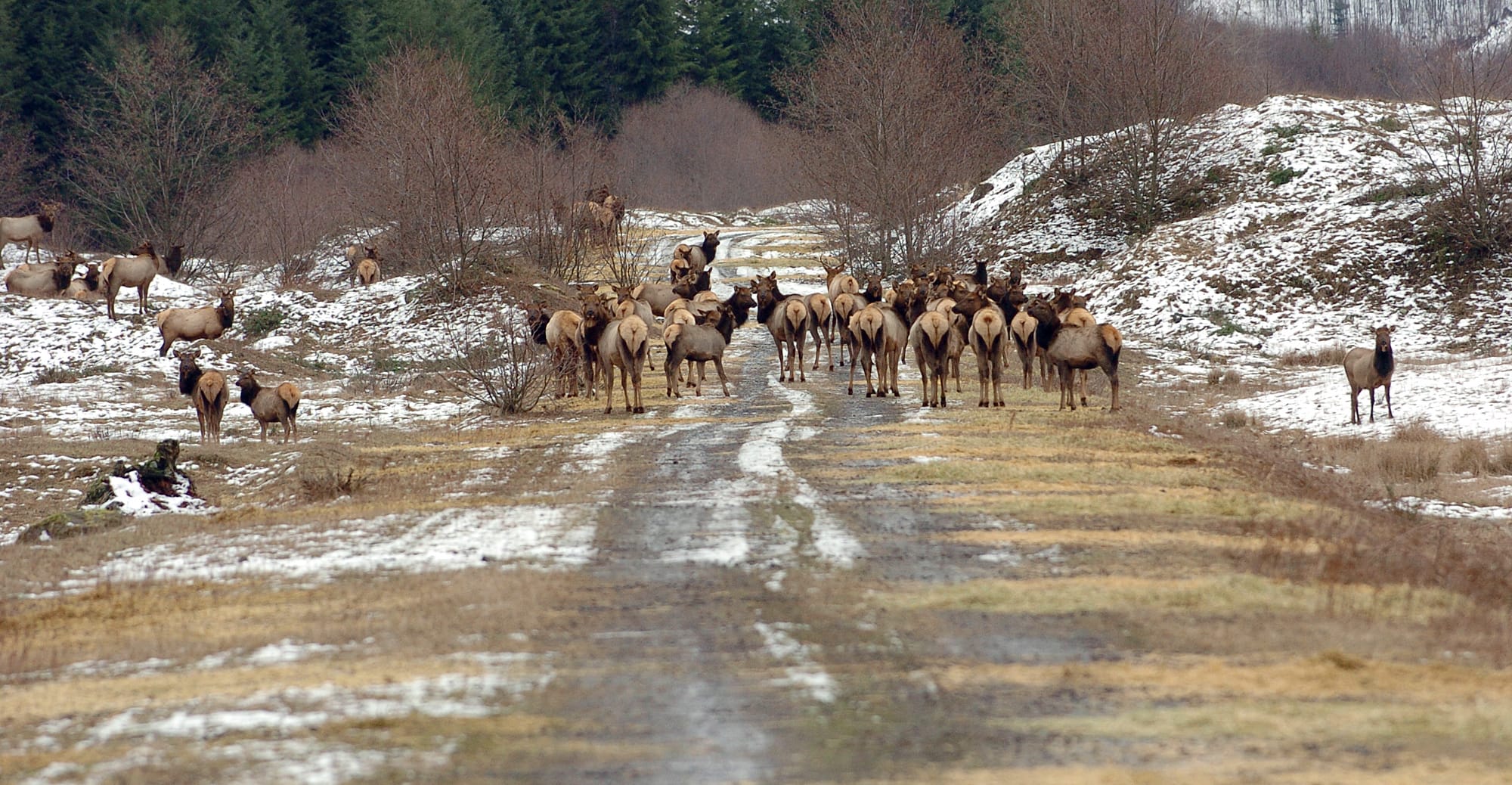Researchers haven’t pinpointed the cause of hoof rot in elk, but the Department of Fish and Wildlife is nevertheless proposing something some hunters have called for because of the disease: decreasing the number of hunting permits in areas where the limping elk live.
State biologists have proposed granting more than 400 fewer hunting permits for antlerless elk in Southwest Washington for seasons this fall, a suggestion the Fish and Wildlife Commission will discuss in March.
Proposed Washington hunting season regulations are available for review on the Department of Fish and Wildlife’s website, http://wdfw.wa.gov/about/regulations/development.html#13-24-098
The proposals include big reductions to the number of antlerless elk permits for game units between I-5 and Mount St. Helens.
Proposed Washington hunting season regulations are available for review on the Department of Fish and Wildlife's website, http://wdfw.wa.gov/about/regulations/development.html#13-24-098
The proposals include big reductions to the number of antlerless elk permits for game units between I-5 and Mount St. Helens.
The proposals will be presented and public testimony will be taken during the March 7 and 8 Fish and Wildlife Commission meeting in Moses Lake. The commission will consider amending or adopting these regulations on or after its April 11-12 meeting in Olympia.
The proposals will be presented and public testimony will be taken during the March 7 and 8 Fish and Wildlife Commission meeting in Moses Lake. The commission will consider amending or adopting these regulations on or after its April 11-12 meeting in Olympia.
At a meeting of the agency’s Elk Hoof Disease Public Working Group last week, Wahkiakum County Commissioner Dan Cothren supported a lower harvest.
“Basically, you’re overharvesting,” Cothren said. “We need to find out what’s causing this before we start taking more elk.”
Axel Swanson of Castle Rock, a former Cowlitz County commissioner who now works for Clark County, also supported a lower harvest.
Starting in 2008, the Department of Fish and Wildlife greatly increased the number of antlerless elk permits around Mount St. Helens to reduce the size of the herd.
The department was responding to criticism after highly publicized winter mortality of elk in the Toutle River valley.
Since then, reports of elk with hoof disease have increased dramatically.
In the past two seasons, the department has granted hundreds of antlerless permits in the Mount St. Helens area.
For the coming season, the number may be cut dramatically.
For instance, the 150-permit antlerless hunt in the Winston game unit and the 100-permit hunt in the Coweeman unit would end. The number of permits in the Margaret unit would be cut from 140 to 100. The number of bull elk permits in the Toutle game unit would be cut from 164 to 125.
The agency goal is to decrease the Mount St. Helens herd by 25 percent.
That herd extends from Interstate 5 to the Cascade crest and from Highway 12 to the Columbia River.
Research on elk in a smaller area west of Mount St. Helens showed a 30 percent decline from 2009 to 2013.
The decline was even higher in the Winston, Margaret and Coweeman game units, which are between I-5 and Mount St. Helens.
Biologists say there’s no evidence that hoof rot has played a role in the declining herd as they continue to look into what is causing the disease.
Reports of lame elk or elk with overgrown or missing hooves in the Cowlitz River basin began in the mid-1990s.
As recently as last month, the agency has killed a total of 27 elk from areas with hoof rot, 10 from nearby areas where the condition hasn’t been seen and six animals from unaffected areas east of the Cascades.
“We know it’s a bacterium,” said Sandra Jonker, regional wildlife manager for the Department of Fish and Wildlife. “We don’t know what bacterium it is.
Researchers are now focusing on treponema, a bacterium known to cause hoof disease in animals.
Research on samples from diseased elk is being done at Washington State University and other institutions as far away as England.
Dr. Boone Mora, a retired public health researcher who lives in Skamokawa, told the group he thinks he knows what is causing hoof rot: leptospiroris, a disease that can be transmitted from animals to humans.
“It fits it better than anything else,” said Mora, who volunteered to study it further if the department would allow him to kill three elk.
Jonker cut Mora off after his allocated three minutes, prompting an objection from Cothren and Cowlitz County Commissioner Jim Misner, who wanted to hear him out.
Dr. Tom Besser, a WSU microbiologist, told the group by phone that he’s considered leptospirosis, which is commonly diagnosed in animals, as a cause of hoof disease.
“We looked at it pretty hard and we don’t see any evidence of association” with hoof rot, Besser said.
Mark Smith, owner of the Eco Park resort near Toutle and a hoof disease committee member, said the department needs to figure out what percentage of elk have hoof rot.
“I honestly can’t tell you a percentage,” Jonker said.
Smith said he’s heard reports that when hunters discover an elk they’ve shot has misshapen hooves, they leave it and try for another animal.
“They’re just not going to take an animal that’s sick,” he said.
The committee needs to continue working on developing criteria for euthanizing elk with hoof rot, Jonker said.
Committee members also said the state needs to spread information about hoof rot through town hall meetings.
“I get asked about this every Tuesday,” the day Wahkiakum County commissioners meet, Cothren said.



